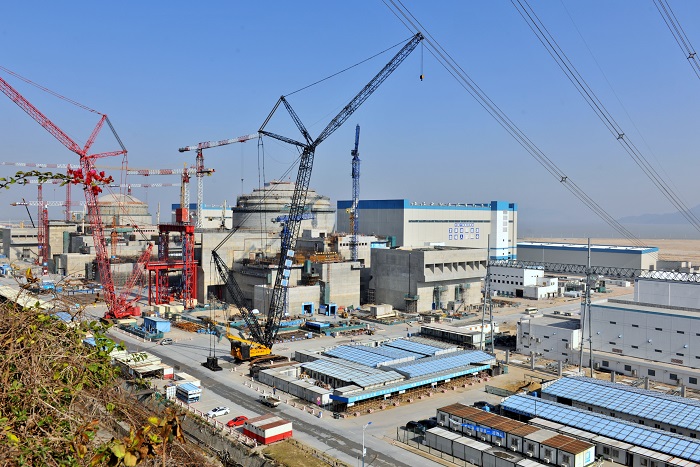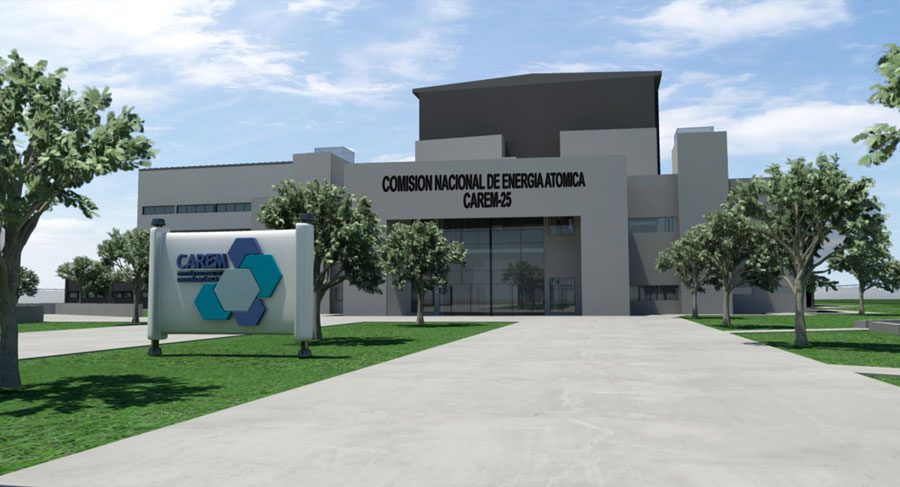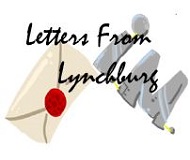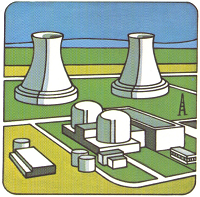ANS Winter Meeting 2015: Nuclear Energy and GHG Emissions

Taishan EPR under construction; courtesy CGN
•Written on location at the ANS Winter Meeting by Will Davis

A message from Electrical Builders, Ind.
America’s Top Performing Nuclear Plants Rely on Electrical Builders, Industries to Expand and Extend the Life of Their Critical Electrical Assets

Taishan EPR under construction; courtesy CGN
•Written on location at the ANS Winter Meeting by Will Davis
On November 5, the day before a scheduled quarterly conference call with investors and analysts, Babcock & Wilcox (NYSE:BWC) announced that it was splitting into two separate publicly traded companies.
I've been listening to an evangelical group of molten salt reactor enthusiasts for several years. Their pitch is attractive and they often make good arguments about the value of rethinking the light water reactor technology model, but most of the participants are unrealistic about the economic, material, technical, and regulatory barriers that their concepts must overcome before they can serve market needs.
ICOSA Media caught up with NuScale chief executive officer Chris Colbert and TerraPower CEO John Gilleland at the recent CERAWeek energy conference in Houston, Tex. The two leaders of these innovative nuclear energy companies discuss the how's and why's of their small and beautiful reactor designs-the NuScale Small Modular reactor and the TerraPower Traveling Wave reactor.
On March 31-April 1, Nuclear Energy Insider held its 4th Annual Small Modular Reactor (SMR) conference in Charlotte, NC (following on the 2nd ANS SMR Conference in November 2013-for notes and report from that embedded topical meeting, see here).

CAREM 25 Prototype Plant; illustration courtesy CNEA
News came out this week that the first concrete had been poured at the construction site for the world's first small modular reactor (SMR) project-and it wasn't for a Generation mPower SMR at the former Clinch River site, or for a SMART SMR (which was the first type in the world to receive governmental design certification) at a site in South Korea.
The American Nuclear Society's Operations and Power Division will host the 2nd ANS Small Modular Reactor Conference during the ANS Winter Meeting on November 12-14, 2013, in Washington, DC. The Opening Plenary for the Conference will begin on Tuesday, November 12, at 8:00 a.m. at the Omni Shoreham Hotel.
From October 30 through November 1, 2013, a group of about 150 people with questioning attitudes about small, modular reactors (SMRs) met in Idaho Falls, Idaho. They were treated to a number of presentations that described the technical progress that has been made so far and also provided a realistic, sobering look at the long, challenging development path that must be traversed to allow the technology to begin contributing to the world's energy security.
In the wake of the Department of Energy's first funding award to Generation mPower for construction of small modular reactor (SMR) plants at the Clinch River Site earlier this year, other groups have begun to form to bolster the position of other SMR technologies-namely, the Westinghouse SMR, the Holtec SMR-160, and the NuScale Power SMR.
Press release from Energy Northwest
This week's announcement by Babcock & Wilcox that it had signed the long-awaited funding agreement with the Department of Energy has been taken by advocates of small modular reactors (SMRs) as just the latest good news on the inevitable path to construction of at least one prototype nuclear plant using SMR reactor technology in the United States. It is widely hoped that this is the harbinger of the rapid spread of the market for SMR plants.
 The US Department of Energy has a $452 million program to share development and licensing costs for selected small modular reactor (SMR) designs. The DOE's goal is to have an operating SMR by ~2022. Last November, the DOE awarded the first grant to the B&W mPowerTM reactor. In more recent news, the DOE has decided to issue a follow-on solicitation to enter a similar cost-sharing agreement with one or more other SMR vendors (and their SMR designs). The status of development and licensing for several SMR designs are summarized below.
The US Department of Energy has a $452 million program to share development and licensing costs for selected small modular reactor (SMR) designs. The DOE's goal is to have an operating SMR by ~2022. Last November, the DOE awarded the first grant to the B&W mPowerTM reactor. In more recent news, the DOE has decided to issue a follow-on solicitation to enter a similar cost-sharing agreement with one or more other SMR vendors (and their SMR designs). The status of development and licensing for several SMR designs are summarized below.
 There are many benefits to living in Lynchburg, Virginia. Not only is it a scenically beautiful place with a diverse and growing economy that has continued its steady progress, even during the Great Recession, but it is also a place full of people who appreciate the value of nuclear energy technology.
There are many benefits to living in Lynchburg, Virginia. Not only is it a scenically beautiful place with a diverse and growing economy that has continued its steady progress, even during the Great Recession, but it is also a place full of people who appreciate the value of nuclear energy technology.
Taxpayers for Common Sense on February 27 issued a press release targeting the Department of Energy for "wasting more than half a billion dollars" on its small modular reactor (SMR) development cost-sharing program. Leaving aside the historically essential role of government investment in developing, advancing, and bringing to market innovative energy technologies-and the fact that early government investments in nuclear energy technology now pay back enormous dividends to all Americans in billions of dollars' worth of affordable and emission-free electricity generation every year-many of the advantages of advanced SMR energy technologies were overlooked or misconstrued in the group's press release and policy brief.
 Significant discussions have occurred recently on various internet venues about "load following"-that is, the capability of a generating source to adjust its power output to match variable demands. There is a myth spreading that nuclear power plants cannot load follow, and today's ever-changing discussion about low-GHG generating sources demands that this myth be dispelled.
Significant discussions have occurred recently on various internet venues about "load following"-that is, the capability of a generating source to adjust its power output to match variable demands. There is a myth spreading that nuclear power plants cannot load follow, and today's ever-changing discussion about low-GHG generating sources demands that this myth be dispelled.
Plus a few pointers to what's in store for 2013
Small Modular Reactors, or SMRs, have been under consideration in many quarters of late as a new focus for nuclear power generation. While the recent deadline for Department of Energy grant money came and went without so much as a whisper from the DOE, the concept continues to be developed. Quite a few presentations have been made, as a result, on reactors of this class here at the ANS 2012 Winter Meeting.